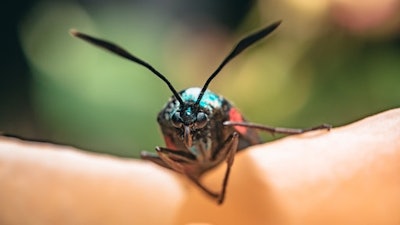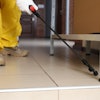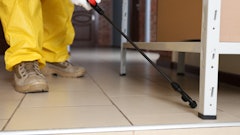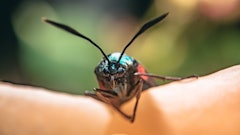
Sandwiched somewhere between your janitorial spend and landscaping services spend will be pest control spend. And, depending on your industry—food or pharmaceuticals run a higher price tag—it might be a smaller expense for you. Many procurement departments dismiss pest control as an expense category not worthy of attention. We hear things like, “The spend is not enough to warrant much attention,” or “There are too many teams involved in this category, and it’s not worth stirring the pot.” Or my personal favorite: “We love our technician.”
But, what if I told you that the average savings we see in this category is 20-30%? Would that be enough to get your attention?
Most in procurement return to the same few largest expense categories at the beginning of each year in an attempt to drive down costs; the problem is that after a few years, it becomes difficult to keep driving savings in these categories. The savings might be hiding in the “under the radar” expense categories—like pest control.
Service expenses such as pest control are often more challenging to review than other categories. The services are outlined in a scope of work that may vary from site to site or based on differing pest pressures in various regions of the country. It is this time and effort weighed against the potential savings opportunity that keeps most procurement departments from devoting too many resources to this category. That reluctance is exactly what your service provider is counting on.
A quick way for you to determine if your pest control program needs a review is to first locate your original service agreement. Aside from normal rate increases, you are also likely to notice service items, not originally contemplated in the agreement, have since been added to the program. Often, we find the prices of such items are equal to or even greater than those that were originally detailed in the agreement.
Once you are ready to dive into your program to find savings opportunities, keep these five things in mind:
1. Pest control is seasonal. While the service is performed throughout the year at sites, the pest pressure is highest in the warmer months of spring and summer. Most often, pest control programs are reviewed in the active months, normally as a result of a specific pest-related infestation that the organization must address.
At the end of the day, if a supplier is failing to meet their obligations, the best and most appropriate time to change is now; but remember, you are at your weakest leverage point with a new supplier when you have a current pest infestation requiring immediate attention. In an urgent situation like this, your organization may be forced to speed up a review process, accept less favorable terms and pay more than what previously budgeted.
While you can’t always predict an infestation, you can look for trends and review the supplier’s overall performance prior to the active season. Taking some time in the winter months to review your pest control program may reveal potential service weaknesses, and if you seek bids for service, you are likely to get more favorable pricing and terms during these off-season months.
2. Watch the add-ons. In many cases, add-on services can end up being more costly than basic services. For example, when a site is experiencing an infestation of ants that appear to be entering from outside, the supplier could perform a spot treatment that would likely resolve the issue. Instead, however, they might recommend a quarterly power spray of the entire exterior of the building to reduce the risk of this situation repeating. Or, if some of the staff are complaining about mosquitos on the exterior of the building after a major rain event, your supplier might recommend monthly mosquito treatments year-round. In most cases, neither of these recurring treatments are necessary. Other common add-on services seen on a regular basis include:
· Foggings
· Fumigations
· Spider web removal
· Wasps/bees
· Vegetation management/weed control
· Exclusion
· Animal trapping
· Termite control
· Small and large fly treatments
· Odor management/restroom sanitation
· COVID-19 disinfecting services
These are but a few of the additional service items—often costing more than basic services requested on the original agreement—often found tucked away in pest control invoices. And, they almost always carry a higher profit margin for the supplier.
3. Question equipment and set-up fees. To perform pest control at facilities, the supplier will need to place different types of control devices. These might include interior rodent stations, exterior rodent bait boxes or flying insect light traps. All of these control devices may be necessary, but there is no magical formula to determine what type and how many you need. Even if your facility is under a third-party audit standard, it is still up the supplier’s discretion as to where and how many control devices they place.
Old standards were based on a certain number of devices per feet, but new strategies are focused on specific risk factors and the likelihood of a pest being in a given area. While there are many suppliers that have adapted to these changes, there are still some that use the initial equipment and the time to set up the program as an opportunity to capture additional revenue. Suppliers typically institute a 100% mark-up on all equipment and related supplies. Keep this in mind as you negotiate your program.
4. Look for ways to reduce service frequencies. If you are under a third-party audit standard, you might have specific guidelines to follow as it relates to frequencies of specific control services. Even under these guidelines, there may be some flexibility based on your industry, region of the country and the target pest. Your quality team will likely understand the rules required for your pest control program and should be able to help you determine which service frequencies are appropriate for your individual site. If you are not under one of these audit standards, you certainly have more flexibility to challenge the frequencies of your current program.
For example, if you require an insect fly light service, it might be performed weekly or twice a month. This frequency may be necessary in the summer months, but during the winter you might be able to reduce that to once a month. If you receive monthly exterior applications for ants, you might be able to experience the same level of control with a quarterly service. A few tweaks in frequency can often offer the same level of control while significantly reducing the overall program cost.
5. Consider the Request for Proposal (RFP). Typically, potential suppliers are given a copy of the current program’s scope-of-work, which might include the number of devices, a facility map and service frequency. While evaluating suppliers on the same scope-of-work allows you to quickly determine who offers the best pricing per service item, it does not challenge the scope of work itself. If you want the best program for your facility and you want it at the best price available, allow the potential supplier to build a custom program for you from scratch.
Many of these suppliers have strong technical groups that can offer better solutions and are willing to be flexible on frequencies and devices if given the chance. If you decide to go out to RFP, be open to different strategies; it is likely you could end up with a better control program at a better price point.
A pest control review can seem like a daunting task with little opportunity for reward, but if you know what to look for, a review of this spend category can translate into big savings for your organization.













